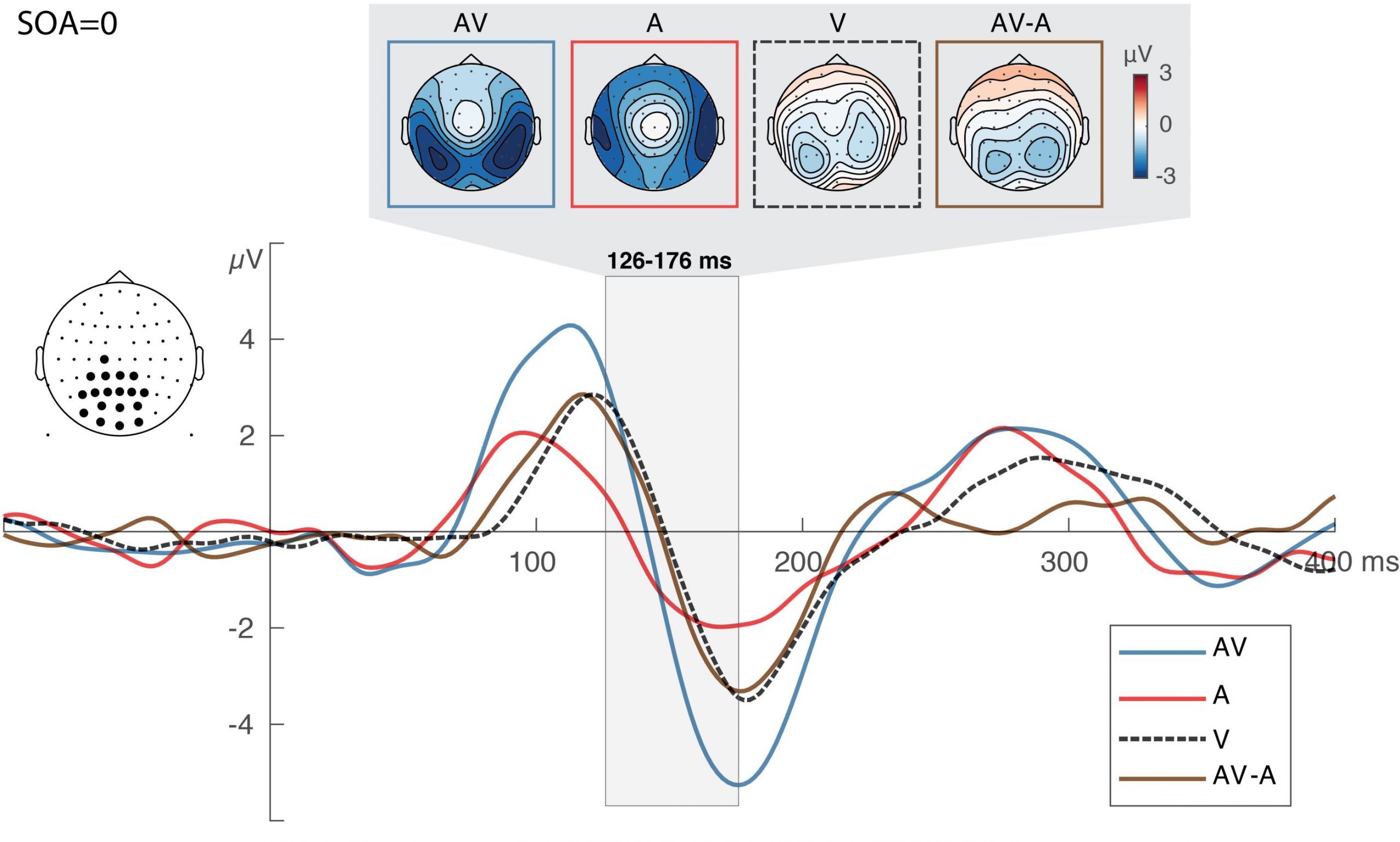Crossmodal interactions in the temporal domain are a crucial aspect of multisensory integration. Using onset timing (SOA) as a critical factor, Dr. Utku Kaya found audiovisual interactions in early ERPs correlated with the changes in behavioral reaction times. These findings provide an important functional link between audiovisual interactions at early stages of sensory processing and perceptual performance. For further information, please visit: https://doi.org/10.1111/psyp.13777
Abstract
The integration of information from different senses is central to our perception of the external world. Audiovisual interactions have been particularly well studied in this context and various illusions have been developed to demonstrate strong influences of these interactions on the final percept. Using audiovisual paradigms, previous studies have shown that even task‐irrelevant information provided by a secondary modality can change the detection and discrimination of a primary target. These modulations have been found to be significantly dependent on the relative timing between auditory and visual stimuli. Although these interactions in time have been commonly reported, we have still limited understanding of the relationship between the modulations of event‐related potentials (ERPs) and final behavioral performance. Here, we aimed to shed light on this important issue by using a speeded discrimination paradigm combined with electroencephalogram (EEG). During the experimental sessions, the timing between an auditory click and a visual flash was varied over a wide range of stimulus onset asynchronies and observers were engaged in speeded discrimination of flash location. Behavioral reaction times were significantly changed by click timing. Furthermore, the modulations of evoked activities over medial parietal/parieto‐occipital electrodes were associated with this effect. These modulations were within the 126–176 ms time range and more importantly, they were also correlated with the changes in reaction times. These results provide an important functional link between audiovisual interactions at early stages of sensory processing and reaction times. Together with previous research, they further suggest that early crossmodal interactions play a critical role in perceptual performance.
